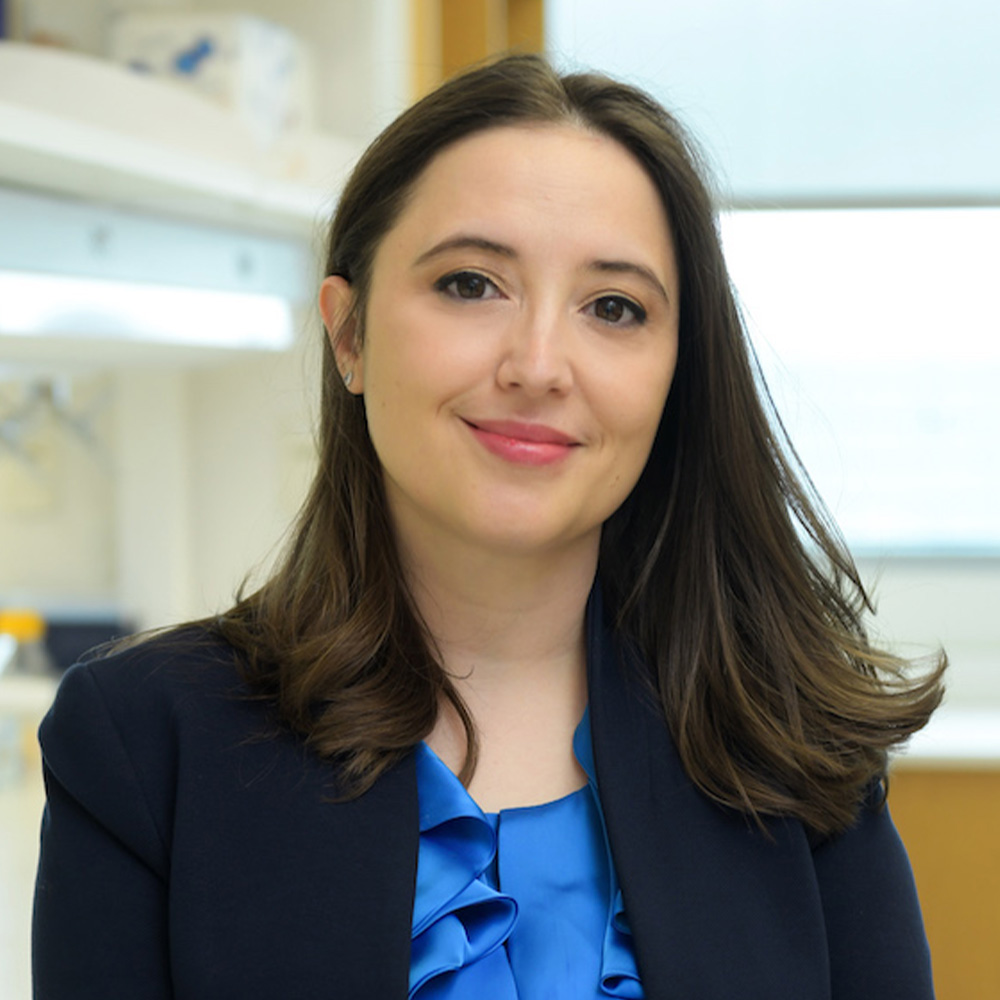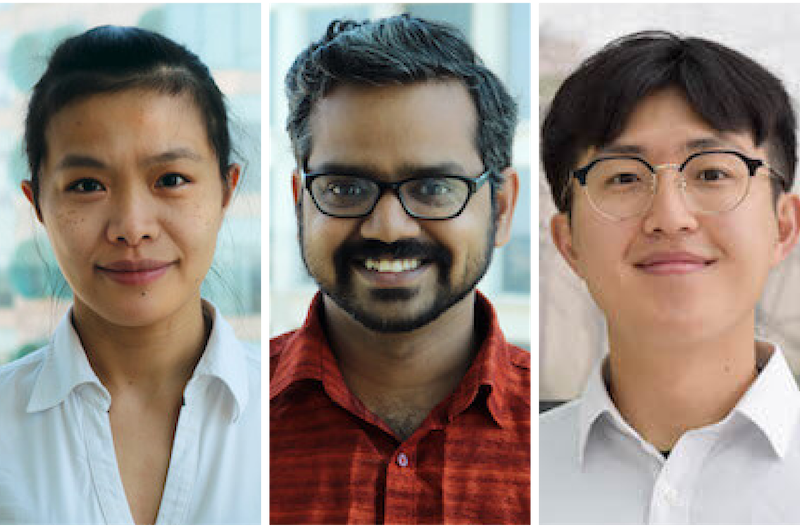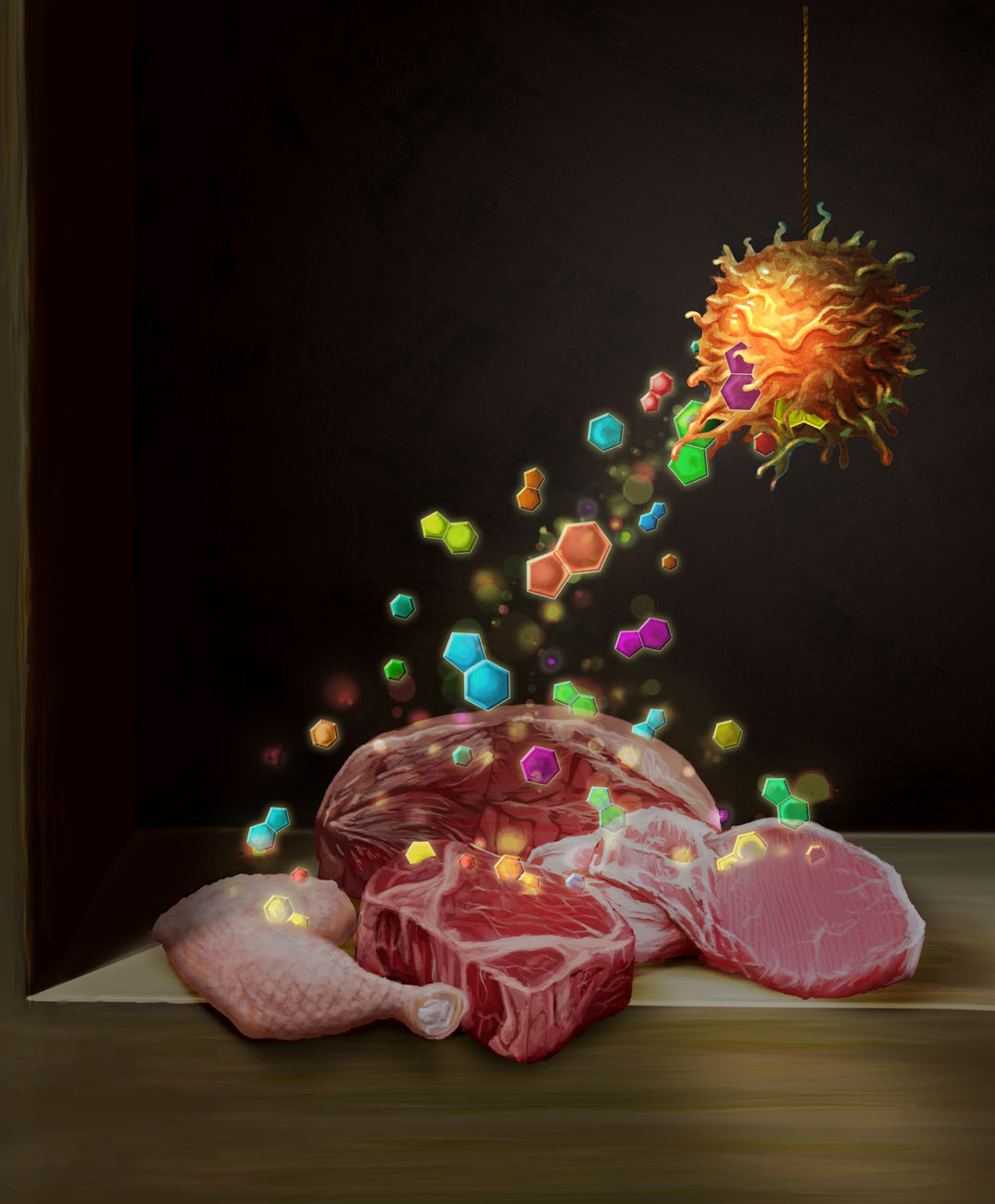Children’s Research Institute at UT Southwestern discovers tumor growth fueled by nucleotide salvage
Hoxhaj Lab measures purine pathways across tissues and tumors, revealing crucial role of salvage pathway in purine supply

DALLAS – July 18, 2024 – Cancer cells salvage purine nucleotides to fuel tumor growth, including purines in foods we eat, an important discovery with implications for cancer therapies from research by Children’s Medical Center Research Institute at UT Southwestern published in Cell.
CRI Assistant Professor Gerta Hoxhaj, Ph.D., and her team have challenged the long-standing belief that tumors primarily acquire purine nucleotides – building blocks for DNA, which is required for cellular growth and function – by constructing them from scratch via de novo synthesis. The Hoxhaj Lab’s newest research shows tumors also significantly use the more efficient salvage, or recycling, pathway to acquire purines.
“For more than 70 years, drugs targeting purine nucleotides have been a cornerstone of cancer treatment, but these treatments have limitations, and drug resistance often develops,” Dr. Hoxhaj said. “Our research illuminates the contributions of both pathways – de novo and salvage – and highlights the crucial, yet previously overlooked, role the salvage pathway plays in tumor growth.”

Dohun Kim, B.S.
Dr. Hoxhaj, with co-authors Diem Tran, Ph.D., Rushendhiran Kesavan, Ph.D., and Dohun Kim, B.S., used isotope tracing to follow the de novo and salvage purine pathways across normal mouse tissues and a variety of cancer types, including breast, kidney, colon, and liver cancers.

Normal tissue analyses showed the kidney salvaged the most purines, which could explain why people with kidney disease are at higher risk for gout. Gout, a type of arthritis linked to uric acid buildup, may be caused by the kidney’s inability to process uric acid, a purine byproduct.
When conducting the same analyses on tumors, CRI researchers discovered cancer cells use both de novo and salvage pathways to fulfill their constant need for purines. Additionally, tumors grew faster in mice given a high dose of oral nucleotides, indicating purines from the diet contribute to cancer growth.

“While our food provides sugars, proteins, and fats, it also supplies purine nucleotides, especially from meat products. Our research could pave the way for doctors to include dietary interventions when creating a treatment strategy for cancer patients – restricting nucleotide availability could be a new tool to slow cancer progression,” Dr. Hoxhaj said.
Dr. Hoxhaj is also an Assistant Professor of Pediatrics and Biochemistry at UT Southwestern. She is a Pew-Stewart Scholar, Cancer Prevention and Research Institute of Texas (CPRIT) Scholar in Cancer Research, V Foundation Scholar, American Cancer Society (ACS) Scholar, and 2024 recipient of the Vilcek Prize for Creative Promise in Biomedical Science. She is also a member of Harold C. Simmons Comprehensive Cancer Center.
This research was supported by National Institutes of Health grants, CPRIT, ACS Scholar award, V Foundation Award, Welch Foundation grant, TSC Alliance grant, and a pilot UTSW Kidney Cancer SPORE grant.
Research was also conducted and supported by CRI Metabolomics Shared Facility, UT Southwestern Quantitative Light Microscopy Core, and the UT Southwestern Whole Brain Microscopy Facility.
Dr. Tran is a CRI Senior Research Scientist, Dr. Kesavan is a CRI postdoctoral fellow, and Mr. Kim is pursuing a Ph.D. in cancer biology at UT Southwestern. All three work in CRI’s Hoxhaj Lab.
About CRI
Children’s Medical Center Research Institute at UT Southwestern (CRI) is a joint venture of UT Southwestern Medical Center and Children’s Medical Center Dallas. CRI’s mission is to perform transformative biomedical research to better understand the biological basis of disease. Located in Dallas, Texas, CRI is home to interdisciplinary groups of scientists and physicians pursuing research at the interface of regenerative medicine, cancer biology and metabolism.
X/Twitter | LinkedIn | Instagram | YouTube | Facebook | Website
About UT Southwestern Medical Center
UT Southwestern, one of the nation’s premier academic medical centers, integrates pioneering biomedical research with exceptional clinical care and education. The institution’s faculty members have received six Nobel Prizes and include 25 members of the National Academy of Sciences, 21 members of the National Academy of Medicine, and 13 Howard Hughes Medical Institute Investigators. The full-time faculty of more than 3,200 is responsible for groundbreaking medical advances and is committed to translating science-driven research quickly to new clinical treatments. UT Southwestern physicians provide care in more than 80 specialties to more than 120,000 hospitalized patients, more than 360,000 emergency room cases, and oversee nearly 5 million outpatient visits a year.
